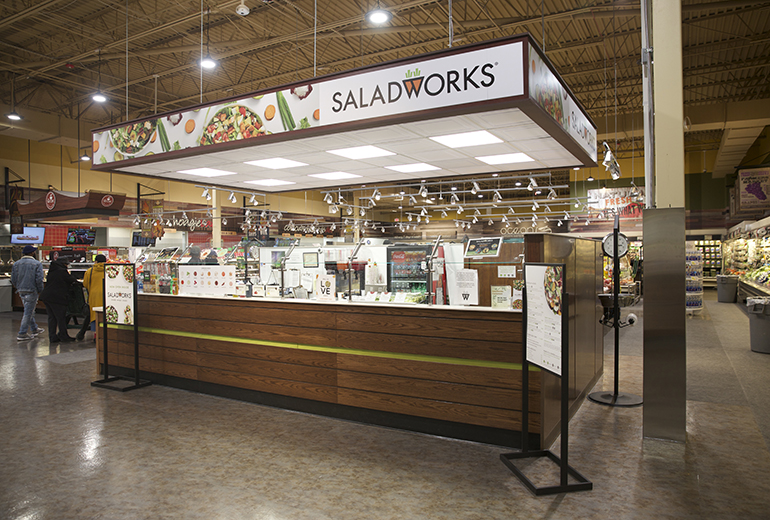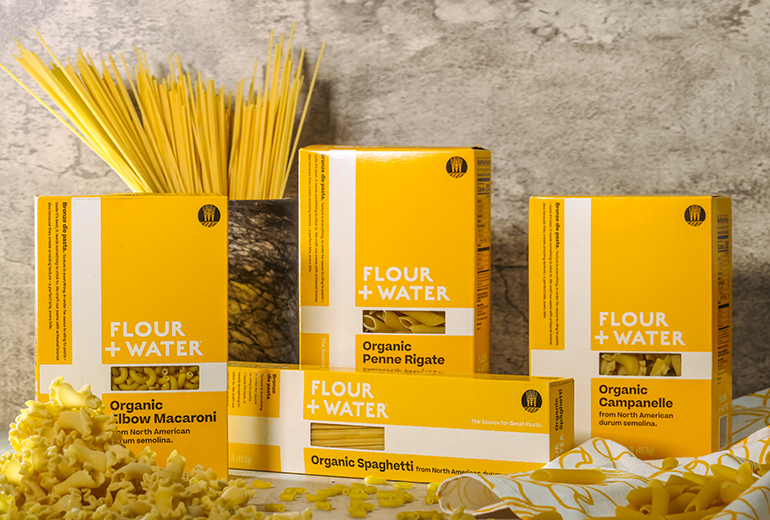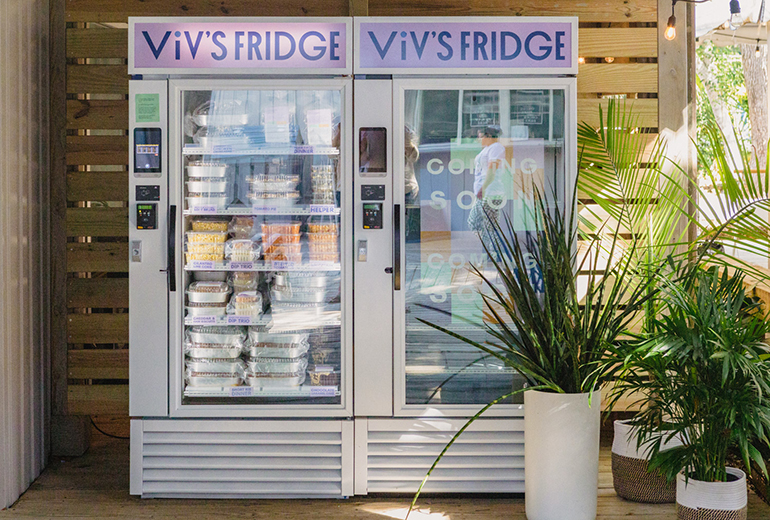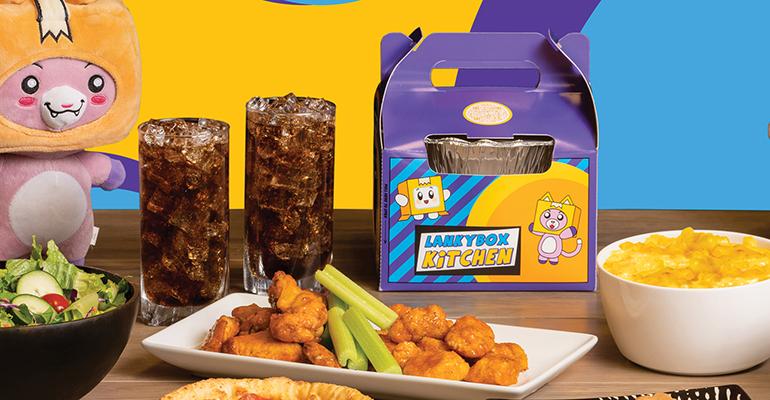For centuries, restaurants were a singular, static place where you physically went to dine out. In other words, a noun and not a verb. But in a post-pandemic America, between the on-demand needs of the average consumer and the ever-suffocating margins of the hospitality industry, foodservice companies are knocking down the four walls of the traditional restaurant and taking an omnichannel approach toward becoming active food brands.
Restaurant brands expanding to delivery and omnichannel accessibility is not new anymore, but they’re now adding new revenue streams in unexpected ways: through CPG, selling their dishes in smart vending machines, doing catering for office buildings, and partnering with retail and virtual brands. The once-segregated sectors of retail/grocery and restaurants are blurring, and restaurants are doing everything they can to rake in more revenue and thrive in this digitally focused consumption era.
“In 2023, the restaurant industry is focused less on real estate and more on distribution points,” said Kelly Roddy, CEO of WOWorks, parent company of better-for-you brands like Saladworks, Frutta Bowls and others. “In 2019, we began thinking about how to make our products more available without having to build a brick-and-mortar restaurant. … So we looked into kiosks in grocery stores, vending machines, and hub-and-spoke ghost kitchens. … We’re taking the same product and rebranding it and creating new brand positioning under new names.”

“If [guests] are at a grocery store, a restaurant, or even at home, they can have access to our salads,” said Kelly Roddy, CEO of Saladworks parent WOWorks.
WOWorks is a perfect example of a hospitality group that is redefining what it means to be in the restaurant industry. Before the pandemic, WOWorks had begun partnering with Sally the robotic salad vending machine (which was shut down by Chowbotics last year) to distribute bowls and salads to hospitals through 24-hour smart vending machines.
While that venture has been backburnered, Roddy said that WOWorks has also been experimenting with in-grocery store kiosks with a hub-and-spoke model, where the salads are assembled at the hub and shoppers can grab a salad at the “spoke,” located at the grab-and-go section of the grocery store. Right now, the company has 30 of these kiosk distribution points in Pennsylvania and New Jersey.
For the future, WOWorks is also looking into new brand positioning for its legacy brand, Saladworks. While Roddy was unable to share many details, he said that it might use the hub-and-spoke ghost-kitchen model to create a brand with a targeted value customer in mind. The salads would be cheaper, have smaller portions and appeal to a different demographic, but share the same ingredients and kitchen as one of the delivery-only Saladworks locations.
“The point is to give access to our food to as many potential guests as possible, in different forms and different places,” Roddy said. “So if they’re at a grocery store, a restaurant, or even at home, they can have access to our salads.”
With the introduction of more restaurants into traditional grocery store spaces, the rise of consumer product goods (CPG) naturally comes into play. Of course, CPG is nothing new to many larger chains like White Castle and TGI Fridays that have been selling boxed sliders and mozzarella sticks for years. But smaller chains and independent restaurants are branching out into packaged goods to introduce their brand outside of the drivable radius of their stores and, of course, to bring in new forms of revenue.

Flour + Water recently launched a line of dried pasta, available in Whole Foods locations in Northern California, with plans to expand nationally.
Flour + Water — a San Francisco Bay Area Italian-American restaurant group — recently made its first foray into packaged goods by launching a line of dried pasta, available in Whole Foods locations in Northern California, with plans to expand nationally. The hospitality group announced the launch of its dried pasta line in December, including spaghetti, elbow macaroni, penne, and campanelle made from North American semolina.
“If you asked a chef if they wanted to get into grocery 15 years ago, they would have said no f***ing way, it feels like selling out,” said Thomas McNaughton, Flour + Water co-executive chef. “But the pandemic really shined a light on how flawed most restaurant models are and how small the margins are. … So people are trying to change the restaurant industry, and in order to change you have to analyze your operations and diversify, as so many did during the pandemic just to survive.”
In addition to getting dried pasta into grocery stores, the second pillar of Flour + Water’s growth plan is akin to WOWorks’: developing a hub-and-spoke model. Delving into the full-time pizza business for the first time, Flour + Water is opening a pizzeria flagship that will serve as the “hub” or commissary to service a new delivery-only pizza business, with smaller spokes or quick-service pizzeria parlors throughout the Bay Area. The flagship itself will have what they’re calling a “massive dough room” (where the pizza for all of the spokes is made), connected to a small restaurant and then with a separate entrance for the delivery hub serving the San Francisco area.
“From the beginning, Flour + Water was fortunate enough to be busy seven nights a week,” McNaughton said. “But there’s 58 seats and you can only turn those tables over so many times a night. For us to expand that reach into the retail world and get into the fast-casual side of the business allows us to touch more people through our food.”
As physical restaurants like Flour + Water get into omnichannel hub-and-spoke operations models — which have been accelerated by the ghost-kitchen industry — virtual brand companies are also evolving. Alex Canter, CEO of delivery-only restaurant company Nextbite said the company is looking into nontraditional locations for its brands like convenience stores and gas stations, which, he said, are starting to become mini food hubs in their own right. Nextbite is also experimenting with giving some of its ghost kitchens a physical footprint by bringing Packed Bowls by Wiz Khalifa to LiveNation stadium locations.
“Brands are starting an ecommerce business and realizing they should open physical locations to create a consumer experience,” Canter said. “We're already starting to see some virtual brands that started virtual and are now opening physical locations, like MrBeast Burgers. … Having both a physical and digital presence can only help create more brand identity and awareness.”
Virtual restaurant companies are industry leaders in changing and shifting the definition of a restaurant, as they partner with CPG brands and straddle the fence between physical and digital worlds. Nextbite has begun partnering with Nestle Toll House cookies to offer freshly-baked cookies as a ghost kitchen add-on for restaurants looking to boost revenues through virtual branding opportunities. This simple cookie menu is not really a restaurant — not even a virtual one — but it is reminiscent of GoPuff’s partnerships with celebrities that allow customers to add on milkshakes or coffee created by influencers to their food delivery orders, or Buddy V’s Cake Slice by Virtual Dining Concepts. Cake Slice is in partnership with “Cake Boss” Buddy Valastro, and lets restaurants sell pre-packaged cake slices out of their kitchens.
Virtual Dining Concepts is also partnering with Chuck E. Cheese and family YouTube channel LankyBox to create LankyBox Kitchen, a delivery-only eatertainment brand.
“The evolution for us is about blurring the lines between physical and digital by delivering exciting content to customers placing the order,” said Stephanie Sollers, CEO of Virtual Dining Concepts.
One of the fastest-growing links between retail and foodservice is the smart vending machine. One company, Fraiche, is a New York City-based smart vending machine company that partners with local restaurants like healthy café Honeybrains and Mexican concept Raiz and places its fridges in office buildings. The company’s fridges are in 15 office buildings throughout the city but it is looking to add more.
Customers can download the Fraiche app, scan the fridge’s QR code to open it, and then select an item and pay for it by scanning again. Fraiche has a centralized hub where it collects all of the food from its partners, and the partner restaurants charge Fraiche wholesale prices for the menu items.
“Your brand might only have one location in the city, but now it can be seen by thousands of commuters,” said Charlotte Frey, head of marketing for Fraiche. “Raiz is trying to expand to new locations and he’s using our partnership to expose his food to new people. … It’s a great way to get exposure without investing in a brick and mortar quite yet.”

Celebrity chef Vivian Howard has been experimenting with the idea of selling her restaurant food from her four North Carolina restaurants through smart fridges to expand revenue without having to invest in more real estate.
Smart vending machines and fridges have become a new tool for restaurants looking to expand into office catering. Sweetgreen, for example, has been ramping up its Outpost program, with pickup-only locations for hospitals, office buildings and residential spaces. Outposts now number more than 550. \
Celebrity chef Vivian Howard has also been experimenting with the idea of selling her restaurant food from her four North Carolina restaurants through smart fridges to expand revenue without having to invest in more real estate. Viv’s Fridge has several locations, mostly located in breweries and wineries on the North Carolina coastal region where customers can pair the beverages with dishes like braised short rib with grits and a 10-layer chocolate caramel cake. Each dish is packaged with four portions and range in price from $24 to $85.
“This fridge is meant to be part of our working restaurant, with all of the food cooked ahead of time in our kitchens,” Howard said. “It’s meant to be a way for restaurants like mine to not lose all of that great talent that doesn’t want to work the night shift anymore. … Each fridge has about $3,000-$4,000 worth of revenue in it, so if I have four fridges and turn those over once a week, you can take away an entire night of service to give your staff a better life.”
Viv’s team uses proprietary technology to make the temperature-controlled smart fridges, and they are also doing research to figure out how to make pizza vending machines or “take and bake” food items. The goal is to keep scaling these fridges and make them a significant part of her team’s livelihoods.
“These types of products really resonate with the takeout and HelloFresh generation,” Howard said. “I don’t think this would have been possible before the pandemic, and now I’m looking at my business model like, ‘How can I work smarter, not just harder?’”
This is the theme song for restaurants in a post-pandemic world: It’s not about “where can we open a restaurant next?” It’s about working smarter to reach more people using the digital and physical technology at your disposal.
“Restaurants used to always be about location, location, location,” Nextbite’s Canter said. “There used to be a lot of time, money and effort spent on brands expanding nationally to invest in the best physical locations and storefronts. … But that’s the old-world way of thinking. Now it’s about digital real estate and maximizing your SEO and figuring out how to get more eyeballs on your brand.”
Contact Joanna Fantozzi at [email protected]

